How to Start an Online Boutique in 2025? [Simple 10 Steps Guide]
Coming up with the perfect formula for starting and running an online boutique will always be the topic of discussion in a world where everything and everyone is basically ‘existing’ in the online segment.
People are ordering almost every piece of clothing or accessories through online platforms and stores. The reasons are numerous, but the most common ones include:
- practicality
- avoiding unnecessary contact
- reliable return policies
- laid-back payment methods that guarantee a safe purchase.
Seen from the perspective of the owners, it’s much easier to start your own online business because there are no costs for a location lease or expenses aimed at keeping your physical store up and running.
That's why, we've put together a killer 10-step guide that will walk you through everything from A to Z on how to launch and grow your online boutique in 2025.
:format(webp)/https%3A%2F%2Fbrandsgateway.com%2Fapp%2Fuploads%2F2024%2F06%2Fbanner.jpg)
Looking for a reliable dropshipping or wholesale supplier?
Join us today for top-quality products and unbeatable prices.
What is an online boutique?
An online boutique is a virtual selling point where the owner offers various fashionable items like clothing and accessories which can be purchased through the internet.
The online shop might offer different types of clothing to target a certain audience or the selection of products might be broader and offer something for every audience.
Is owning an online boutique profitable?
Owning an online boutique can be transformed into a lucrative venture as these companies usually experience great growth potential due to the fast market adaptation.
To illustrate how big the eCommerce fashion market is, we’ve consulted a recent report from Statista, confirming that fashion is the biggest eCommerce market segment set to increase by 9.4% annually and reach a size of US$1,103.1 billion by the end of 2027.
What to know before starting your online boutique?
In order to get to some point of the launch, the most important thing you need to remember is that you’ll always have to plan some things ahead and be aware of the following:
- Create a structured business plan: Developing a business plan is the safest way to keep up with the current market trends. A strategy will help you grow steadily and anticipate many market variables that might cause damage in the long run.
- Beginnings can be hard: Every start brings its own amount of complexity, so it’ll be a lie if we say that starting your online boutique from home would be a “piece of cake.” However, with the right amount of dedication and an unequivocal focus on the things that are crucial for a business to thrive, you’ll definitely bring more value and rise to the challenge.
- Expect pop-up challenges: Brace yourself as once you’re up and running, you’ll be constantly faced with ad-hoc challenges that’ll naturally arise from every corner. What’s important is that you’ll need to keep a clear mind and an attitude that’ll always seek the solution to a certain issue. Find what motivates you and use it to keep going forward to your ultimate goal, because only this way you’ll manage to sustain the progress.
- Learn more about legal technicalities: Yes, legal stuff might be a struggle for everyone out there with an online business, but it’s essential to be aware of regulations that you need to follow in order to keep your business on the market. Depending on the location where you’re based, check if you need to pay certain taxes, register your brand name as a trademark, etc. For example, suppose you are forming LLC in Florida. One thing you need to know is that it has “pass-through” taxation, which is not subject to double taxation like a corporation. You can also register your brand name (called Fictitious Name in Florida) at $50 and is renewed every 5 years for the same price.
How do I start an online boutique from home?
Starting an online clothing business can be a slightly challenging process, but if you’re following the steps we provide in this article, you’ll be surely set on the path to a successful venture.
Step 1: Choose a product niche
Selecting a specific niche within the clothing segment is one of the key elements that need to be determined when starting with your online boutique. Here’s how to do it:
- Research is key: Start by pinpointing exactly what makes your target audience tick. What styles are they drawn to? Are they looking for the latest runway pieces or timeless classics?
- Create a buyer persona: Understand who you’re selling to. Is your ideal customer someone who follows every fashion week, or are they looking for statement pieces to elevate their everyday look?
- Select your products wisely: Not everything that glitters is gold for your store. Focus on pieces that resonate with your brand’s image but also what sells best.
Check out: Winning Products to Dropship
For example, starting an online boutique that’ll cover all sorts of high-end fashion items from world-renowned brands is a very lucrative business idea that’ll bring many fashionistas to your store.
Any additional offers will only act as a “cherry on the top.” Offering high-end brands like Gucci, Dolce & Gabbana, Armani, and other big names is a sure recipe for placing your store in a higher position than your competition that sells regular clothing items.
Check out: Worst Dropshipping Niches
Step 2: Research the market
While niche selection plays an important part in your online boutique’s success, another key component you must not overlook is assessing the market and looking for gaps that need to be filled.
There will always be something that the market lacks and isn’t covered by your competitors. Once this something has been identified, it’ll bring you closer to your goals.
However, in fashion, finding this might be a bit confusing as the market’s main inventory is clothing and accessories. But you can always look deeper in terms of what kind of clothing and brands are the least offered and assess whether they’ll be a solid ground for taking them as your main offering.
The important thing to remember here is that in the fashion market, you’ll always have a buyer’s audience no matter what you choose to sell as people love experimenting and buying new stuff online.
Selling designer clothing, for example, will always put you one step ahead of online boutiques that sell unbranded clothing.
Here are a few tips on how to research the market:
- Analyze competitor gaps: Start by closely examining your competitors. What are they offering, and more importantly, what aren’t they offering? This could be specific styles, sizes, or even sustainable fashion lines that are missing from their collections.
- Stay updated with trends: Keep a finger on the pulse of the latest fashion trends by following fashion influencers, attending fashion shows (even virtually), and subscribing to industry magazines. This can give you insights into future trends that you can capitalize on before they become mainstream.
- Engage with your potential customers: Direct engagement through surveys or social media polls can provide firsthand information about what your potential customers are looking for.
- Use social media for insights: Social media platforms are goldmines for market research. Look at comments and feedback on popular fashion pages to see what customers are seeking but not finding. Instagram, TikTok, and Pinterest are particularly useful for spotting visual trends and gaps.
Step 3: Select your business model
Now that you’ve already done your market research and are aware of your potential target audience, it’s time to see which business model will best suit your needs.
In the fashion and clothing segment, there are two common models for doing online business:
Dropshipping
Dropshipping represents an eCommerce fulfillment method that allows you to sell things online that you don’t physically own. In other words, you’ll partner up with a dropshipping vendor that’ll process and ship the orders to your customers.
The costs of operating a dropshipping clothing store are minimal which gives you more space and opportunity to work more on your customer service and support system and provide the ultimate experience to your potential clients.
In this way, you’ll generate positive feedback, and your business will grow much faster. You can further read about such an experience in this dropshipping case study.
Best dropshipping suppliers
- BrandsGateway: BrandsGateway is a leading dropshipping supplier specializing in luxury fashion, offering a wide range of designer clothing, shoes, bags, accessories, and jewelry. Dropshippers can sell over 20,000 products and work with high-profit margins that can reach up to 250% per order.
- Printful: Printful is a popular print-on-demand dropshipping supplier specializing in customizable apparel and accessories. They offer a diverse range of products, including clothing, phone cases, pillows, mugs, and more.
- Tasha Apparel: Tasha Apparel is a dropshipping supplier specializing in non-branded women’s clothing. They offer a variety of fashionable apparel items, including tops, dresses, bottoms, outerwear, and activewear.
Wholesale
Wholesale refers to a fulfillment method that allows you to have full control over the inventory by buying in bulk.
Similar to dropshipping, here you’ll also need a reliable wholesale supplier that’ll provide you with the desired inventory. The main difference is that you’ll have to keep track of your storage and have a warehouse where you can store your products.
Best wholesale suppliers
- BrandsGateway: Besides a dropshipping service, BrandsGateway also offers retailers to buy products in bulk. Shipping is available to over 170 countries worldwide with fast delivery times that take no longer than 7 business days. In case of wrongly shipped orders, customers have at their disposal a convenient 7-day return policy.
- Faire: A wholesale marketplace such as Faire allows small businesses and retailers to connect and build long-lasting business relationships. Purchasing from a marketplace also makes it simple to stock your store with a variety of items including clothing, accessories, etc.
- Matterhorn: Matterhorn is a women’s apparel-only wholesale supplier that allows retailers to sell clothing, accessories, footwear, and lingerie. They deliver worldwide and provide a return policy of 24 hours after the order has been delivered.
Check out: How to Start Buying Wholesale?
Step 4: Create and execute your business plan
Your business plan is an essential part of your venture. The plan will serve you as a guide through the market penetration and in it, you can set your main goals and the ways you’ll achieve them.
Of course, the business plan will also serve as a secure basis for applying for additional grants and financial assets or presenting your idea in front of investors who are eager to help you emerge more easily on the market.
Here’s how to get it started:
- Define your vision and objectives: Begin with a clear statement of your boutique’s mission and the unique value proposition you offer to your target market. Establish short-term and long-term goals, such as launch timelines, sales targets, and expansion plans.
- Market analysis and strategy: Dive deep into your market research to outline your target audience’s demographics, preferences, and buying behaviors. Detail how your boutique will meet their needs better than competitors. Your strategy should include pricing, promotions, and distribution channels, emphasizing online marketing tactics suitable for an online boutique.
- Operations plan: Describe the day-to-day running of your boutique. This includes your sourcing strategy for products, inventory management, shipping and fulfillment processes, and customer service policies. Highlight any technology or software that will streamline your operations, such as eCommerce platforms, customer relationship management (CRM) tools, and accounting software.
- Financial projections: A critical component of your business plan is a detailed financial forecast. Include startup costs, projected sales, operating expenses, and profitability analysis. Break down the funding you need to get started and how you plan to allocate it. Also, provide scenarios for best-case, expected, and worst-case financial outcomes to show preparedness for various market conditions.
- Marketing and sales strategy: Elaborate on how you’ll attract and retain customers. Discuss your online marketing strategies, including social media marketing, email campaigns, SEO, and content marketing. Describe any loyalty programs, discounts, or special promotions you plan to offer.
- Risk assessment: Identify potential risks to your business, from supply chain disruptions to changes in consumer trends, and outline strategies to mitigate them.
Check out: How to Create a Business Plan?
Step 5: Create a brand identity
Crafting the visual identity of your online boutique is akin to setting the stage for your brand’s story. The brand identity you choose is not just a random symbol but the embodiment of your boutique’s image and the unique experience you offer.
It’s the first touchpoint with potential customers and the visual anchor that will keep them returning. By thoughtfully crafting your boutique’s visual identity, you lay the foundation for a brand that’s not only seen but remembered and revered.
These are the most important elements that make up a store’s brand identity:
Slogan: A compelling slogan can encapsulate your brand’s mission or promise in a few memorable words like Nike’s “Just Do It.” Your slogan should mirror the exclusivity of your offerings, promising an unparalleled shopping experience.
Logo: Your logo should not only capture attention but also communicate your boutique’s story and distinctive character. For example, consider the iconic simplicity of the Zara logo, which uses minimalist typography to convey its modern, fashion-forward brand identity, making it instantly recognizable worldwide.
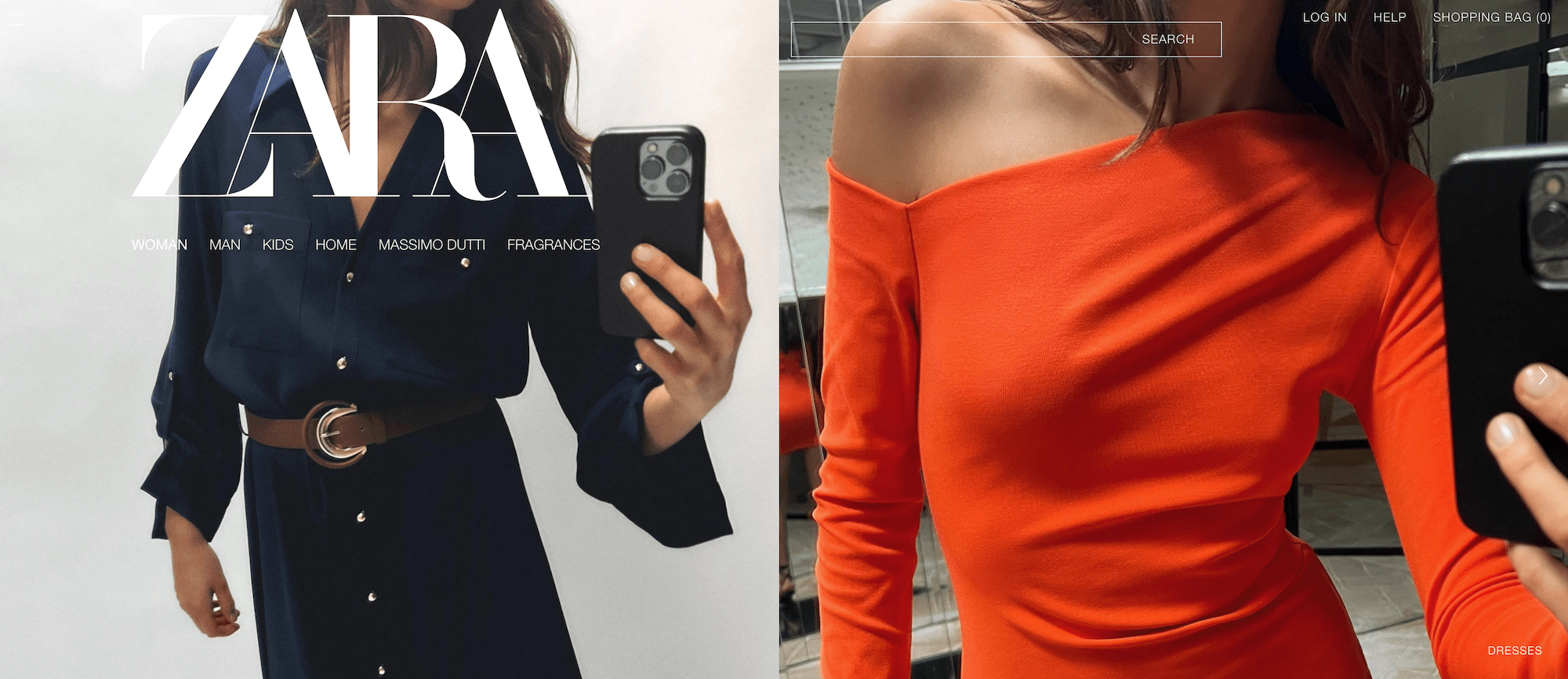
Color Scheme: Color plays a pivotal role in brand identity. It can influence mood, communicate values, and distinguish your brand from competitors. The palette you choose should complement your logo and be consistent across all your marketing materials. To illustrate, ASOS utilizes a vibrant and diverse color palette to reflect its wide range of styles and inclusivity.

Typography: The fonts you select for your website, packaging, and promotional materials should align with your brand’s character as well. Elegant, serif fonts can suggest tradition and reliability, while sleek, sans-serif fonts might convey a more modern, minimalist vibe which can be seen used by online clothing boutique Everlane.
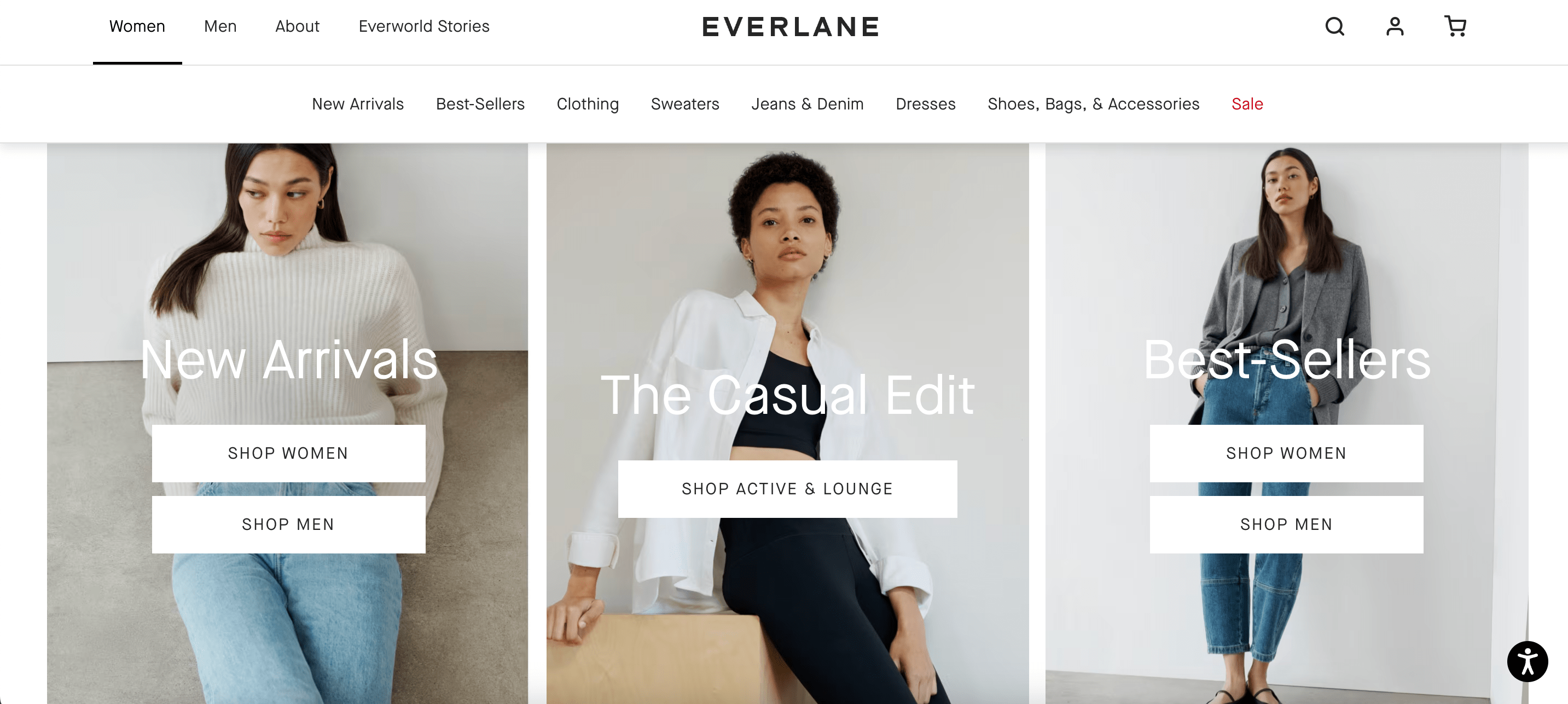
Imagery: The type of images you use in your marketing also speaks volumes about your brand. High-quality, professional photos that showcase your products in the best light are crucial. Mytheresa, for example, utilizes crisp, elegant imagery to highlight the luxury and quality of their apparel, making each piece seem irresistible.
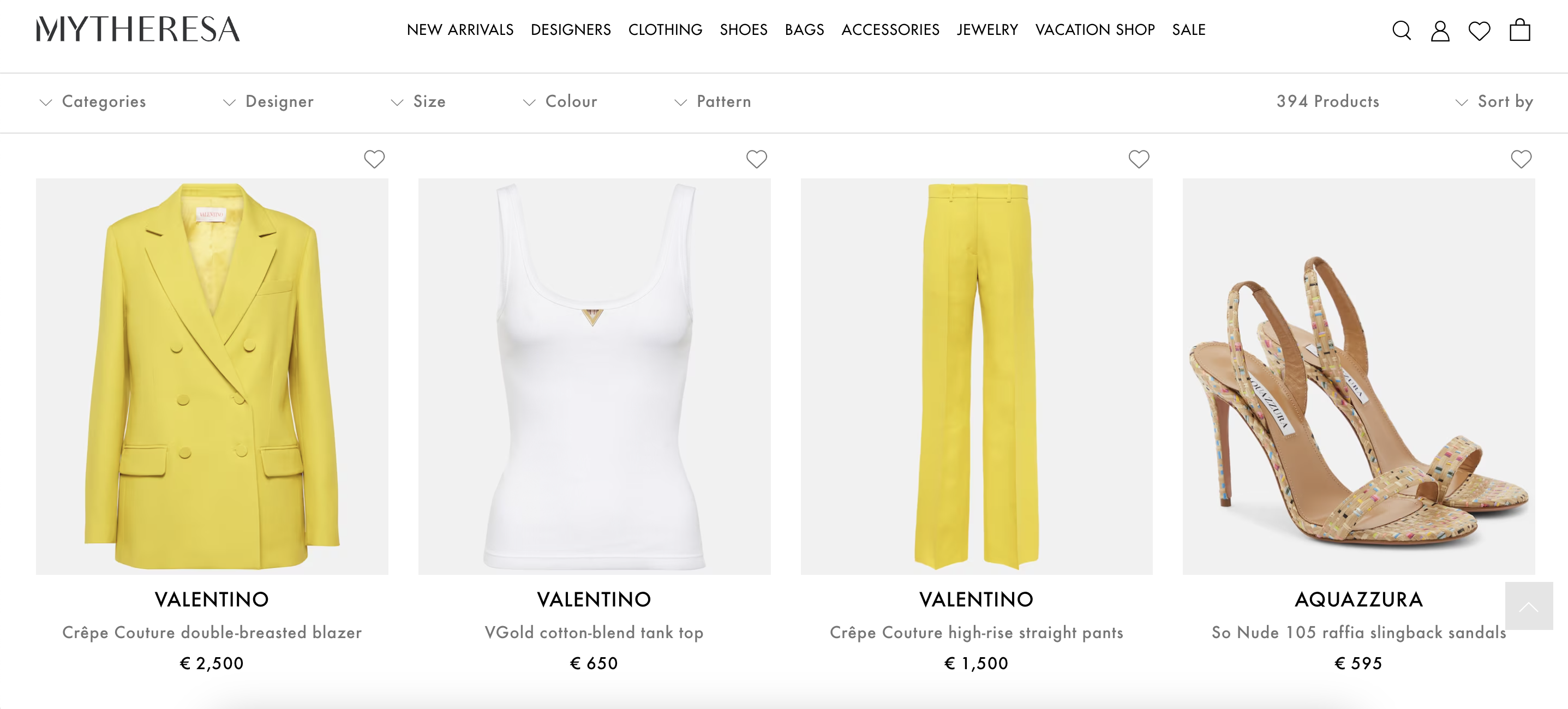
Voice and Tone: How you communicate with your audience, from product descriptions to social media posts, will also reflect your brand’s identity. A brand targeting a younger audience might use a more casual, playful voice, while a luxury brand might adopt a more refined and professional tone such as the online store Fashionphile.

Step 6: Choose your business domain name
Another thing that needs to be taken care of is the store domain name. The more original and simple but descriptive your domain and subdomains are, the more consumers will actually get interested in exploring the services your business provides.
But there’s one thing here that we can’t omit pointing out. The very first thing you need to do after you come up with a name is to check whether this domain name is available as a domain.
Trust us on this. There’s nothing more annoying than having to go by another domain name just because you came up with something that already exists in the domain directory.
For example, if you decide to go by LuxFash, and if you check on www.domain.com, you’ll notice that LuxFash.com is already taken. The website will provide you with certain alternatives such as .org, .tech, .online, etc.
There’s no big difference in which domain extension you choose, but bear in mind that the most commonly used are .com, .net, and .org.
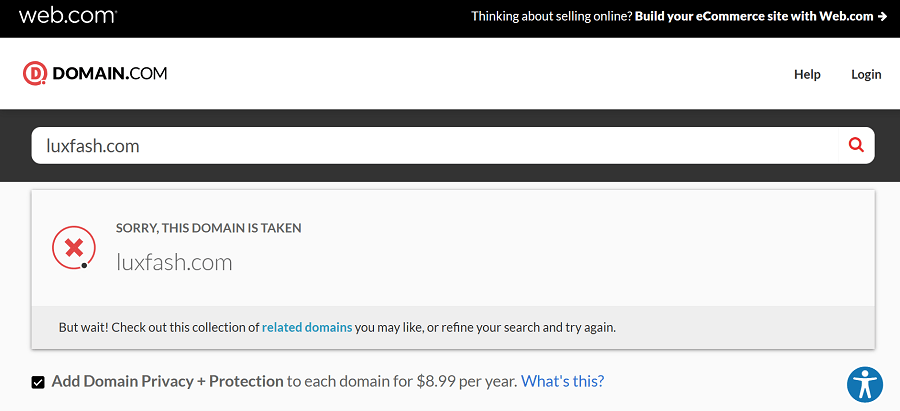
Once you select your domain name, you should also see if that particular name appears on social media handles or elsewhere. You don’t want to end up with an already existing Facebook profile that’ll cause you further problems in your work and customers have a hard time finding you on social media because of this.
Check out: How to Pick Out Store Domain Name?
Step 7: Set up your website
Your website will be the platform through which your online boutique will run.
Did you know that 94% of the impressions are related to the people’s first glance at your web design?
That’s the main reason why you should take your time and come up with a design that’ll surely spark some curious gazes.
You can bring in a designer who’ll easily do this for you, or you can always check for platforms that allow for easy web-building such as the following ones:
- Shopify: You can use Shopify to create your dedicated shopping store and integrate your inventory very easily. To get the gist of it, consult our full guide on dropshipping on Shopify.
- WooCommerce: A WordPress-based store with the WooCommerce plugin is another popular choice you have, allowing access to thousands of the best WooCommerce plugins. For further information, check out our guide on dropshipping with WordPress.
- BigCommerce: BigCommerce is a robust platform that offers online store building. To dive deeper into how you can leverage BigCommerce for your dropshipping business, refer to our detailed guide on mastering dropshipping with BigCommerce.
- Wix: Wix is another quite popular eCommerce platform among entrepreneurs in the process of opening an online store. For more elaborate details, we’ve also prepared a guide on dropshipping with Wix, informing you about everything you need to know about the platform.
- Shift4Shop: Shift4Shop is one more alternative you can take into consideration, offering online business owners an affordable platform to base their ventures on. You can explore this eCommerce software by reading our beginner’s guide to dropshipping with Shift4Shop.
All of these eCommerce platforms can work well with dropshipping stores and online boutiques – you just need to decide whether you want to take care of your inventory yourself or have your supplier deal with it through the dropshipping model.
If you’re in doubt, you can always browse through our platform comparison articles:
However, even if you’re not experienced in this segment, there are web development companies that offer turnkey store solutions, such as LemonDev, especially if you want your store to be based on Shopify.
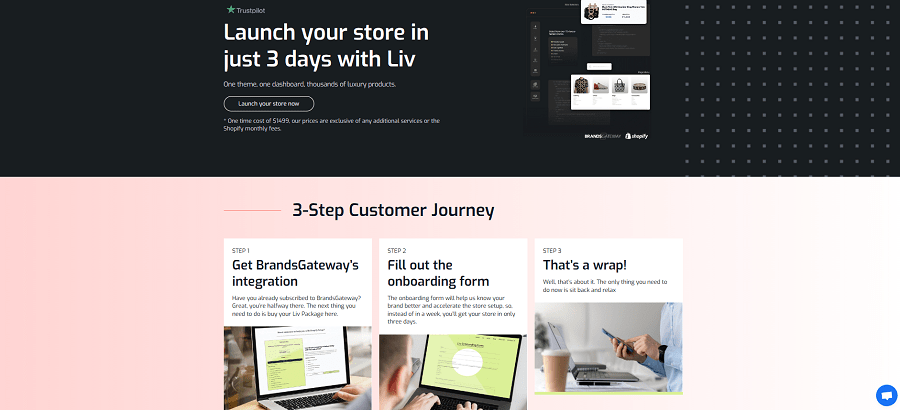
Step 8: Decide on the price range of your products
The best way of setting a retail price is by preparing a price strategy which includes:
- analyzing competitors’ prices
- defining pricing goals
- calculating costs.
In some cases, you can benefit from extra help when setting up a pricing strategy. For example, when dropshipping with BrandsGateway, you’d be able to work with high-profit margins and be provided with suggested retail prices.
You can use the following formula to calculate how much profit you’d be earning by selling their products listed below:
Wholesale Price * Markup – Wholesale price = Profit
To put the formula to use, the Jacquemus bag comes with a wholesale price of €399. The recommended retail price is €850, leaving you with a profit of €451.
Check out:
Step 9: Optimize your store for mobile use
With over half of all internet traffic coming from mobile devices (Statista), ensuring your website is mobile-friendly can significantly enhance the shopping experience for your customers.
On top of that, as of 2023, mobile eCommerce has accounted for 60% of global eCommerce sales, a number that is expected to keep on growing in the years to come.
 You will find more infographics at Statista
You will find more infographics at Statista
Here’s how you can make your store shine on smaller screens:
- Responsive design: Implement a responsive website design that automatically adjusts to fit the screen size of any device, from smartphones to tablets.
- Simplified navigation: Streamline your site’s navigation to make it easy for mobile users to browse through different categories and products.
- Fast load times: Optimize images and reduce unnecessary scripts to ensure your pages load quickly on mobile devices.
Step 10: Promote your online boutique
Once your business is up and running, there’s nothing else left but to start exploring ways to promote it.
To get the most coverage you can, it’s best to combine both free and paid advertising strategies:
Free advertising
- SEO marketing: With a little help from SEO tactics, you can learn how to target the audiences that will likely interact with your fashion store. Set up keywords, measure the buyer’s intent, and get relevant traffic that eventually will lead to conversions. This can also be achieved organically with a strong SEO strategy.
Read more: SEO Shopify Practices and ChatGPT for SEO
- Social media marketing: Create profiles on Instagram, Facebook, TikTok, and Pinterest to showcase your collections and connect with customers. Engage with your audience through posts, stories, and reels. Encourage shares, tags, and interactions to naturally boost your visibility. Take a look at how online store Rebag engages with their audience through their Instagram posts.
- Content marketing: Create engaging, value-driven content on your blog that resonates with your target audience. From fashion tips to how-to guides on styling, content that educates or entertains can attract a loyal following and enhance your SEO efforts. Take as an example the online store Farfetch‘s style guides.
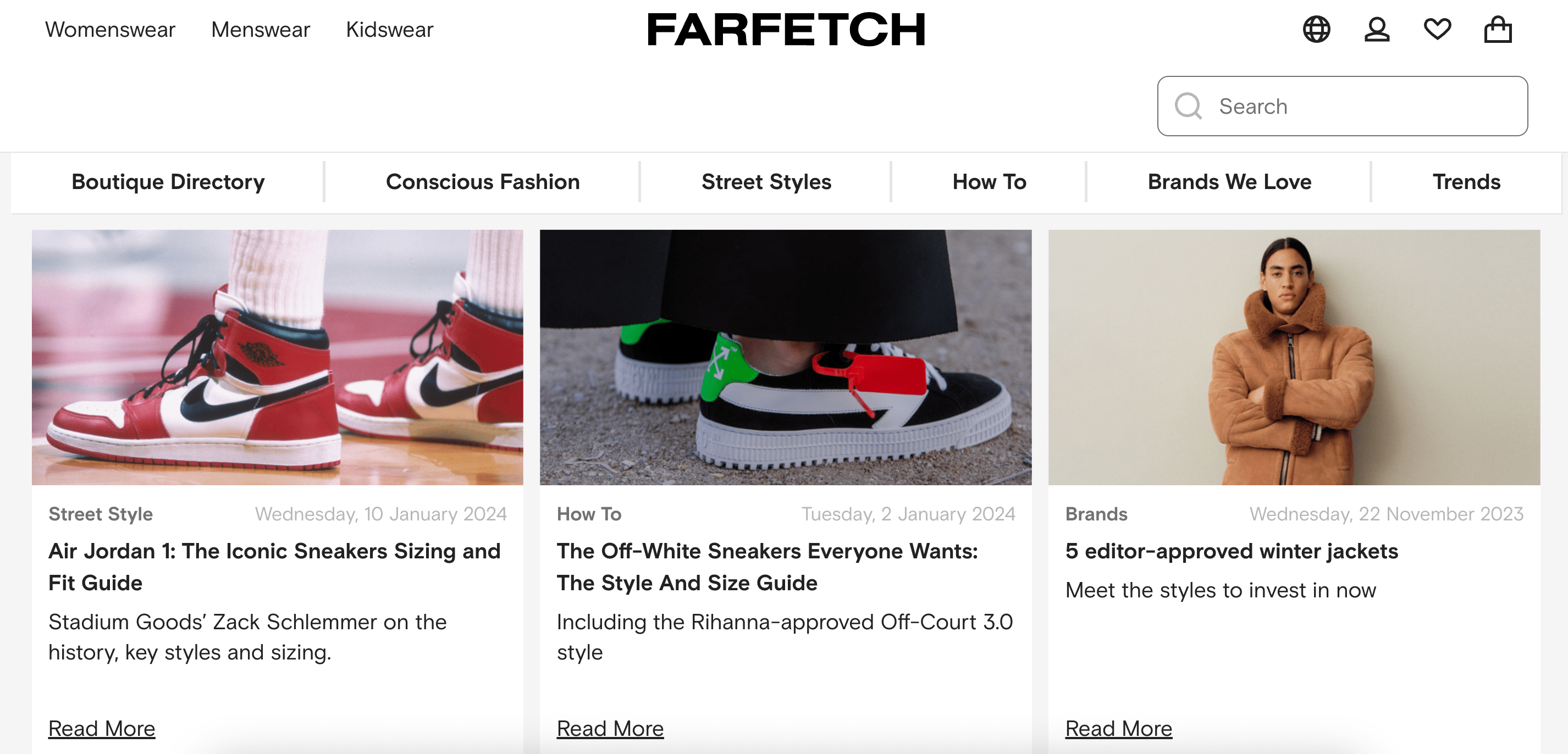
- Email marketing: Build an email list right from the start. Offer exclusive deals or sneak peeks to subscribers. Craft newsletters that highlight new arrivals, promotions, or behind-the-scenes looks to keep your audience engaged and coming back for more.
Paid advertising
- Facebook marketing: You can use Facebook to post your clothing offers and attract audiences from the social media space. The targeting campaigns can be precisely tailored in order to attract customers who are more likely to buy high-end fashion items and are ready to spend their money on this kind of stuff. For example, try running a campaign that will feature your best-branded handbags. Of course, the best suited for these types of advertisements is the female audience.
Read more: How to Use Facebook Ads for Dropshipping?
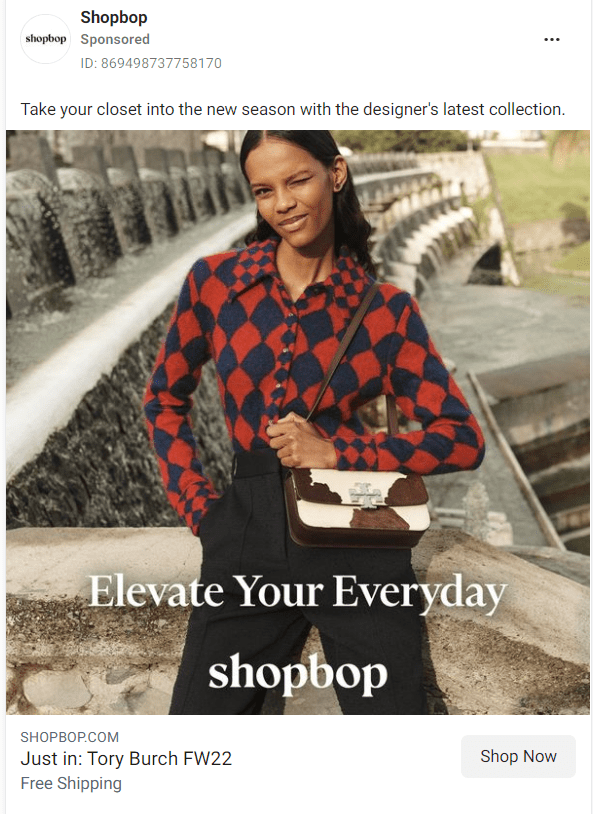
- Instagram marketing: Instagram is an app that deeply relies on the visual experience of the user so it’s perfect for marketing products from the Fashion segment, allowing you to promote your business in many ways, including business Instagram captions and Instagram fashion stories. Additionally, you can find numerous influencers who’ll gladly accept to promote your business for a certain fee. That way, you can have access to their huge armies of followers that’ll open your store to potential customers.
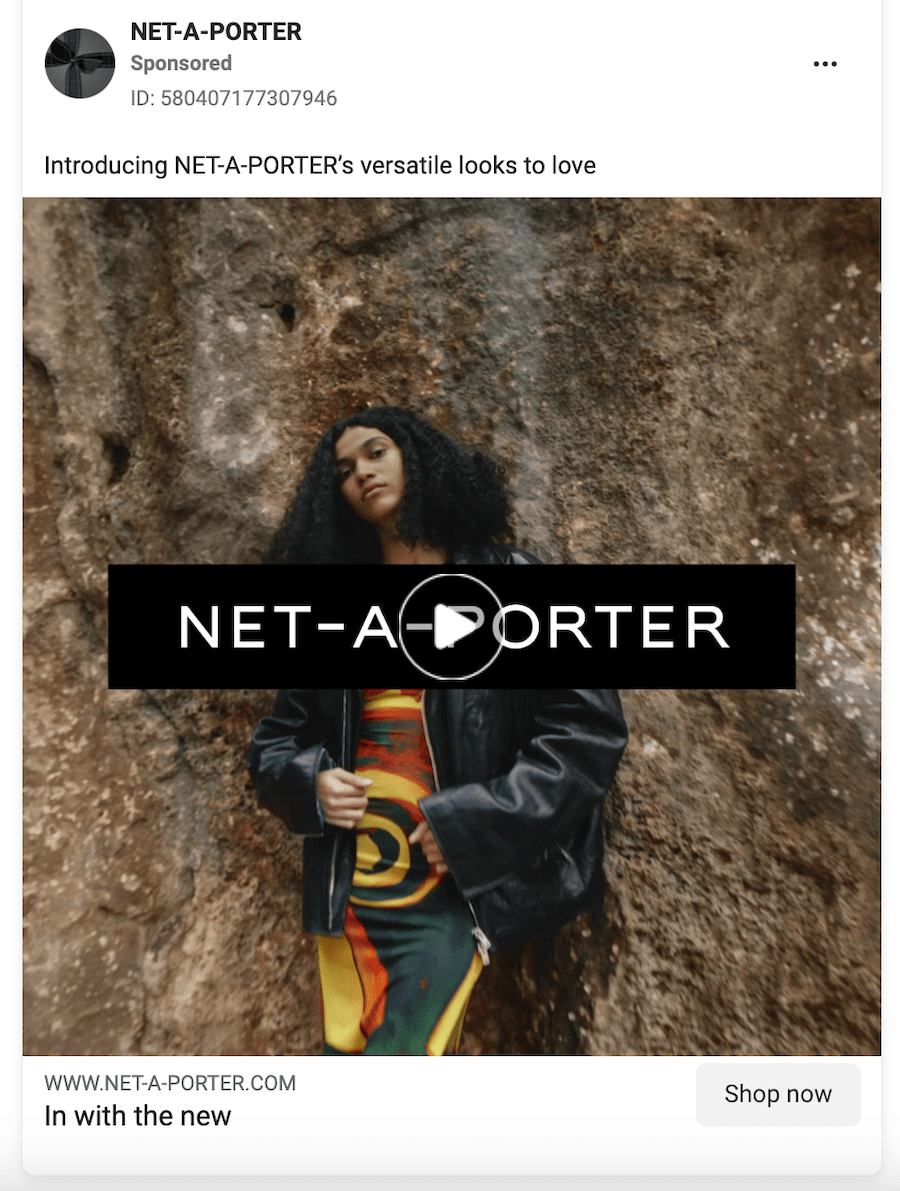
- Google marketing: Through Google Ads, you can target potential customers based on their search behavior and interests, ensuring your ads appear at the moment they’re most likely to engage. Whether it’s through search ads, display ads, or shopping ads, Google marketing provides a comprehensive strategy to boost visibility and attract buyers looking for luxury fashion experiences.
Read more: How to Create Google Shopping Ads?
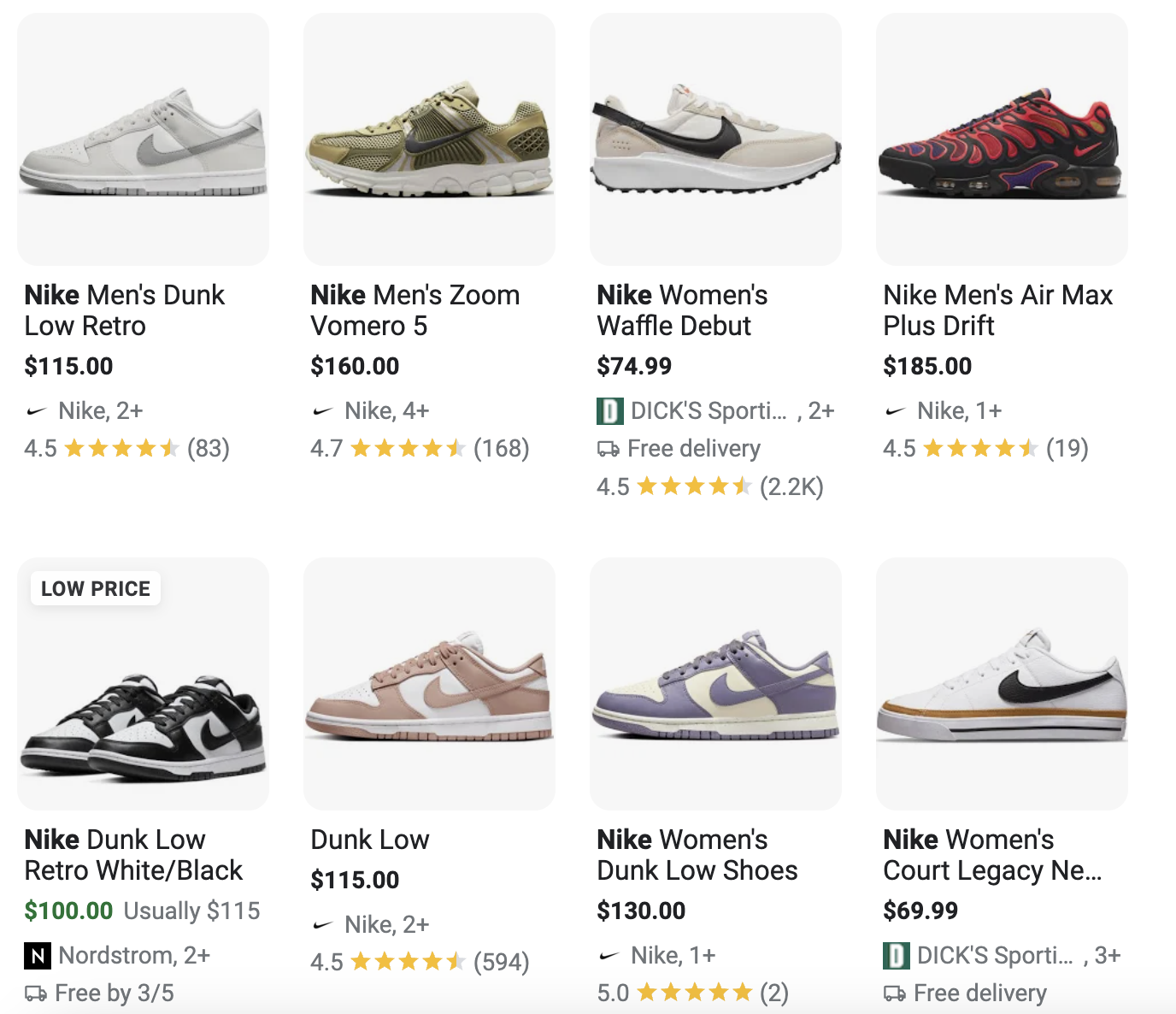
- YouTube marketing: YouTube is another way of getting more traffic to your online boutique. With a base of 2 billion active users, the platform gives you a sea of endless possibilities in terms of targeting. With the help of YouTube Ads, you can achieve wonders. An early Christmas campaign, a Halloween discount on certain products, and a summer clearance are just some of the ways you can market your high-fashion online store.
Read more: How to Make Video Ads for Dropshipping?
Starting an online store with BrandsGateway
BrandsGateway is a wholesale and dropshipping supplier that can supply your store exactly with what the market is missing.
Luxury designer clothing is indeed a category that will differentiate your online boutique and set you straight on the path of guaranteed profit.
Whether you are buying in bulk or you are a dropshipping business, BrandsGateway will provide you with the best product inventory:
- You can find more than 100 high-end fashion brands such as Dolce & Gabbana, Gucci, Roberto Cavalli, Karl Lagerfeld, Versace, Cerutti 1881, Michael Kors, Diesel, Dsquared2, Miu Miu, Prada, Frankie Morello, Rich John Richmond, Chloe, Trussardi, Tom Ford, Jimmy Choo, etc.
- You can choose from the various product categories that BrandsGateways offers in the luxury segment and choose from: clothing, shoes, bags, accessories, jewelry, sunglasses and frames, and watches.
- There is no MOQ (minimum order quantity) for dropshipping orders, while their wholesale service requires a minimum of €1000/ $1200 per order which can easily be reached.
- Their dropshipping service comes with automated integration for eCommerce platforms Shopify, BigCommerce, WooCommerce, Wix, and Shift4Shop in addition to Rest API integration for custom-made websites.
- Convenient return policy of 7 days for wholesalers and 14 days for dropshippers.
For further details, check out ‘How to Start Buying Wholesale with BrandsGateway‘ and ‘How to Start Dropshipping with BrandsGateway.’
To sum up
Embarking on the journey to launch your online boutique in 2025 is an adventure that’s more achievable than you might think. With the roadmap laid out in this guide, you’re equipped with the insights and strategies needed to carve out your path in the digital marketplace.
It’s time to shift from daydreaming to action. With a clear vision, a detailed plan, and the willingness to learn and adapt, you’re ready to set the ball rolling.
FAQ
-
Absolutely! Starting an online boutique offers the freedom to curate a unique collection of products and tap into the thriving e-commerce market. With the right strategy, passion for fashion, and a keen understanding of your target market, an online boutique can be a profitable venture that grows over time.
-
The startup costs for an online clothing store can vary widely depending on inventory, website design, and marketing efforts. Initial expenses include website hosting, domain name, branding, initial inventory, and marketing. Opting for dropshipping can significantly lower upfront costs by eliminating the need for holding inventory.
-
- Market research: Understand your niche and target market to identify trends and customer preferences.
- Create a business plan: Draft a detailed business plan outlining your business model, products, marketing strategy, and financial projections.
- Choose a platform: Select an eCommerce platform that suits your business needs and budget.
- Source products: Decide whether you’ll stock inventory or use a dropshipping model. Select suppliers accordingly.
- Define brand identity: Develop a strong brand identity, including a memorable name, logo, and design theme.
- Build a marketing strategy: Implement a robust marketing strategy using social media, SEO, and email marketing to attract and retain customers.
Related articles
Our clients' success stories speak volumes about the impact BrandsGateway has had on their businesses.
View More Articles








:format(webp)/https%3A%2F%2Fprod-brandsgateway-images.s3.fr-par.scw.cloud%2F2022%2F04%2Fdimitar_alimaskoski-6b833d35-cf2.webp)
:format(webp)/https%3A%2F%2Fbrandsgateway-img.s3.fr-par.scw.cloud%2F4352691.jpg)
:format(webp)/https%3A%2F%2Fbrandsgateway-img.s3.fr-par.scw.cloud%2F1903807.jpg)
:format(webp)/https%3A%2F%2Fbrandsgateway-img.s3.fr-par.scw.cloud%2F6825471.jpeg)
:format(webp)/https%3A%2F%2Fbrandsgateway.com%2Fapp%2Fuploads%2F2025%2F04%2Freview-scaled.jpg)
:format(webp)/https%3A%2F%2Fprod-brandsgateway-images-do.s3.fr-par.scw.cloud%2F2019%2F04%2F6-Best-Men%E2%80%99s-Clothing-to-Sell-in-2019.jpg)
:format(webp)/https%3A%2F%2Fprod-brandsgateway-images.s3.fr-par.scw.cloud%2F2022%2F02%2Finstagram-stories-dropshipping-store-c7eaad24-d54.jpg)
:format(webp)/https%3A%2F%2Fbrandsgateway.com%2Fapp%2Fuploads%2F2025%2F03%2Fstartup-costs-scaled.jpg)
:format(webp)/https%3A%2F%2Fbrandsgateway.com%2Fapp%2Fuploads%2F2025%2F03%2Fgiveaway-scaled.jpg)
:format(webp)/https%3A%2F%2Fbrandsgateway.com%2Fapp%2Fuploads%2F2024%2F06%2Fwindow-display.png)
:format(webp)/https%3A%2F%2Fbrandsgateway.com%2Fapp%2Fuploads%2F2025%2F03%2Fniche-store-scaled.jpg)
:format(webp)/https%3A%2F%2Fbrandsgateway.com%2Fapp%2Fuploads%2F2025%2F03%2Fshopify-chargebacks.jpg)